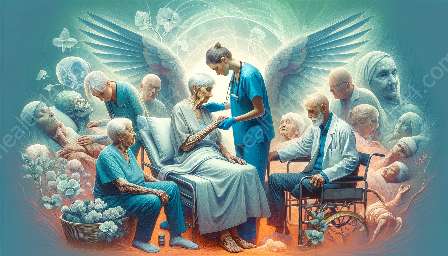As the world population continues to age, it is crucial to explore ways to assist older adults in managing and organizing their daily activities and tasks. Technology has played a significant role in addressing the needs of this demographic, and it has the potential to greatly improve the quality of life for older adults. This article delves into the ways in which technology can empower older adults to navigate their daily routines, providing insights that intersect with gerontechnology, aging in place, and geriatrics.
Understanding Gerontechnology and Aging in Place
Gerontechnology refers to the study of technology and aging, focusing on how technology can be used to enhance the lives of older adults. It encompasses a wide range of applications, from health monitoring and communication devices to smart home technologies. Aging in place, on the other hand, is the concept of allowing older adults to remain in their own homes as they age, rather than moving to assisted living facilities or nursing homes. The intersection of these two fields presents a wealth of opportunities for integrating technology into the daily lives of older adults, enabling them to maintain greater independence and autonomy.
Technology's Role in Managing Daily Activities
Many older adults face challenges in managing their daily activities and tasks, whether it's remembering important appointments, adhering to medication schedules, or simply staying connected with loved ones. Technology offers a variety of solutions to address these challenges, ranging from simple smartphone applications to advanced smart home systems.
1. Memory Aids and Reminders
For older adults who struggle with memory loss or cognitive decline, technology can provide invaluable support. Smartphone apps and digital calendars can send reminders for medication schedules, doctor's appointments, and other important events. Voice-activated virtual assistants, such as Amazon's Alexa or Google Home, can also provide verbal reminders and prompts, offering an interactive and accessible solution.
2. Health Monitoring and Telemedicine
Technological advancements in health monitoring devices allow older adults to track vital signs, such as blood pressure and heart rate, from the comfort of their homes. Additionally, telemedicine services enable remote consultations with healthcare providers, reducing the need for frequent in-person visits and ensuring prompt access to medical assistance.
3. Smart Home Automation
Smart home technologies are revolutionizing the way older adults manage their daily activities. From automated lighting and temperature control to voice-activated devices that can perform tasks like making phone calls or sending messages, smart homes create a more accessible and convenient living environment for older adults.
Enhancing Social Connectivity
Loneliness and social isolation are common challenges faced by many older adults. Technology offers numerous ways to combat these issues and foster meaningful social connections.
1. Video Calling and Social Media
Video calling platforms and social media networks enable older adults to stay connected with family and friends, regardless of geographical distance. These tools provide avenues for virtual socializing, reducing feelings of isolation and enhancing overall well-being.
2. Online Communities and Support Groups
The internet provides access to a wealth of online communities and support groups tailored to older adults. These platforms offer opportunities for seniors to connect with peers who share similar interests or experiences, creating a sense of community and belonging.
Geriatrics and the Future of Aging
The field of geriatrics, which focuses on the medical care of older adults, is closely intertwined with the evolving landscape of technology. As advancements continue to shape the future of aging, geriatrics professionals are incorporating technological solutions into their practice to better serve the aging population.
1. Remote Patient Monitoring
Remote patient monitoring technologies allow geriatric healthcare providers to keep a closer eye on their patients' health status, even when they are not physically present. By collecting continuous data on vital signs and other health indicators, healthcare professionals can intervene proactively, leading to better outcomes and improved care for older adults.
2. Personalized Health Management
Technology enables personalized health management tools, such as wearable fitness trackers and mobile health apps, which empower older adults to take an active role in monitoring and improving their health. These tools provide real-time feedback and encourage healthy behaviors, promoting overall wellness and disease prevention.
The Future of Gerontechnology
As the global population continues to age, the demand for innovative gerontechnology solutions is on the rise. From wearable devices to robotics and artificial intelligence, the future holds immense potential for advancing the capabilities of technology in assisting older adults with daily activities and tasks.
By embracing and harnessing the power of technology, older adults can experience enhanced independence, improved health outcomes, and greater social connectivity. The intersection of gerontechnology, aging in place, and geriatrics will continue to drive the development of cutting-edge solutions that cater to the evolving needs of an aging population.


